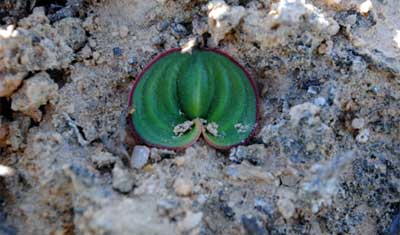
YOU CAN ALSO READ:
THE GENUS ERIOSPERMUM
Eriospermum are tuberous and pgeophytes plants. In habitat, the tuber of Eriospermum is always subterranean and very variable in size and leaf shape depending of the environment where the plant grows. There are hundred species of this genus native to a wide variety of habitats in sub-Saharan Africa but Namaqualand being the most interesting region of most of this interesting genus. The genus start to grow after winter rains in South Africa and when the day starts to be short.
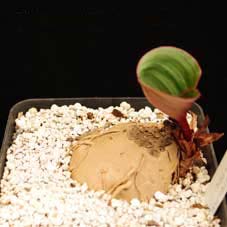
eriospermum capense
Cultivation of the genus is similar than winter-growing succulents, as othonna, tylecodon, conophytum,…. Eriospermum tubers
are dormant during the summer, at which point their pots can be stored somewhere out of direct sun, and given only light waterings when the soil is bone dry.
The plants starts to grow in our autumn season, when the day light begin to be short, they should be given deeper watering to encourage them to
wake up. Most plants shower first the flower and send up an individual leave. Winter rainfall species should be treated similar to other
geophytes plants of winter rainfall desert areas. A well drained mix is a basic rule to maintain nice plants in culture.
Eriospermums seem to have modest needs for mineral nutrients; a few doses of balanced, water-soluble fertilizer at half-stength over the course
growing season are sufficient.
These plants are easy to pollinate after flowering using a fine paintbrush, most of the plants are not self-compatible, so you need two or
more plants to transfer the pollen. Seeds are propagated without too much difficult. Fresh seed germinates rapidly and completely if sown j
ust beneath the soil surface and kept moist. Plant in early autumn in shade and light place, new plants will sow in one-two weeks. Seedlings
need to be kept consistently moist, but not saturated, for their first season, given dilute fertilizer every few weeks,
and be exposed to as much light and fresh air as adult plants need. Do not transplant before 2-3 years.
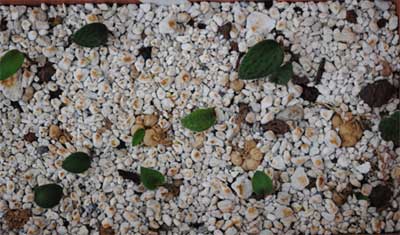
eriospermum erinum in cultivation after 4 years
Eriospermum paradoxum:
This relatively common specie has one of the most impressive leaves. Widespread in Southern and Western Cape and very variable in plant size and leaf shape depending of the environment where the colony grows.
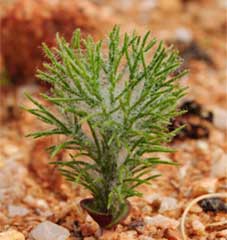
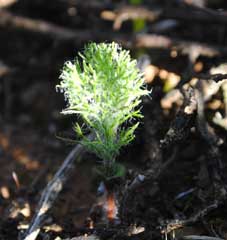
Eriospermum erinum:
Only found in an small area near Nieuwoudtville. It has a small spherical tuber, a solitary heart-shaped leaf (3.5 by 2 cm.) usually appearing after flowering.
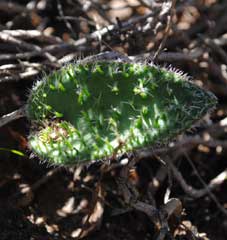
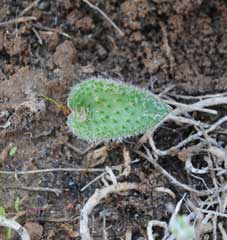
Eriospermum villosum:
It has a small spherical tuber growing deep in shady place between rocks, a solitary heart-shaped leaf full of fine hairs.
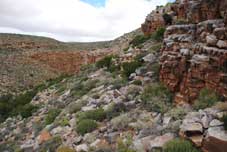
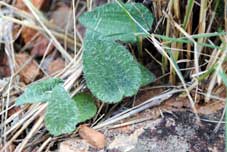

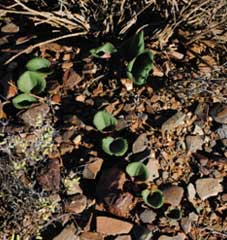
Eriospermum capense:
Is found in rocky grassland and open scrub from the western Cape. It has a solitary erect leaf. The caudex can grow to six centimeters in diameter, the leaves up to seven centimeters in height
Eriospermum cooperi:
Is a widespread species found in many places in southern Africa In South Africa it is found in arid areas of the Karoo, Eastern Cape and the Orange Free State in a variety of habitats. Is one of the biggest plants of the genus. The caudex can grow to seven centimeters in diameter, the leaves up to six centimeters in height. The flowers are white.
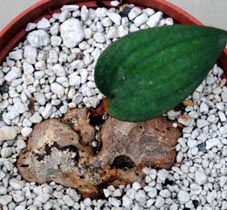
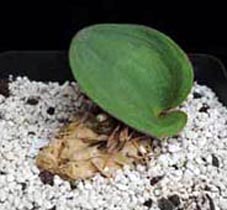
Eriospermum degrei:
This species is found in eastern-cape in South Africa. Is a small, the tuber can grow to 5-6 centimeters in diameter. The flowers are greenish white.
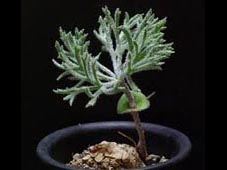
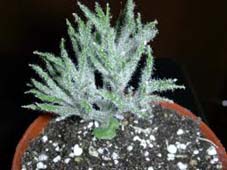
Eriospermum sp:
These unidentified miniature species were growing in sandy slope in Knersvlakte area, north of Lutzville. The leaf is small with a heart shaped solitary leaf with red margins fringed.
